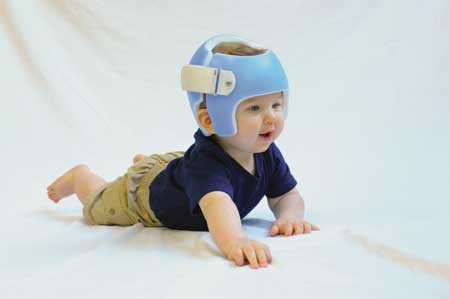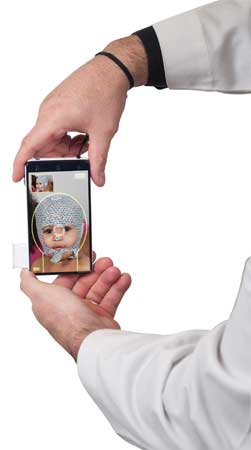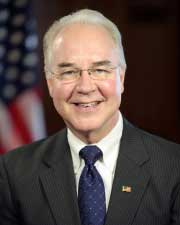|
Orthologix brings you quarterly information to keep you current on industry news, trends and insights. Orthologix is an orthotics and prosthetics practice delivering evidence-based care throughout the Delaware Valley.

The STARband® Cranial Remolding Orthosis
 The STARband® from Orthomerica is a custom cranial remolding orthosis used to treat deformational plagiocephaly, brachycephaly, and other head shape deformities in infants 3-18 months of age. The STARband name is derived from its purpose – Symmetry Through Active Remolding. The STARband® from Orthomerica is a custom cranial remolding orthosis used to treat deformational plagiocephaly, brachycephaly, and other head shape deformities in infants 3-18 months of age. The STARband name is derived from its purpose – Symmetry Through Active Remolding.
The helmet orthosis provides total contact over the prominent areas of the skull and leaves a void over the flattened areas to facilitate more normal skull symmetry. The rigid outer shell maintains the structural design integrity and is either lined with closed cell foam to allow progressive adjustments or is made of a clear thermo-plastic material, which allows easy visual inspection of the areas of contact and voids within the orthosis.
The helmets are modified throughout the treatment program to accommodate growth, promote symmetry, and improve proportion. Treatment generally takes 3 - 4 months, but varies depending on the patient’s age and severity of cranial asymmetry.
 The SmartSoc® 3D Capturing System is used to scan the infant’s cranium. Using a Samsung Galaxy S7 with Android Operating system, the scan takes about one minute and converts 2d images to a 3d model. Through the eBrace® web portal, users can review the model. The orthosis is then fabricated from the scan. This non-invasive technology even allows the patient to move and because the scanner is portable, patients can easily be scanned at clinics or other facilities. It is the latest addition to Orthomerica’s US FDA 510(k) cleared line of image capture devices for manufacturing of STARband and STARlight cranial orthoses. The SmartSoc® 3D Capturing System is used to scan the infant’s cranium. Using a Samsung Galaxy S7 with Android Operating system, the scan takes about one minute and converts 2d images to a 3d model. Through the eBrace® web portal, users can review the model. The orthosis is then fabricated from the scan. This non-invasive technology even allows the patient to move and because the scanner is portable, patients can easily be scanned at clinics or other facilities. It is the latest addition to Orthomerica’s US FDA 510(k) cleared line of image capture devices for manufacturing of STARband and STARlight cranial orthoses.
Orthologix practitioners John Izak, CPO, and Patrick McAllister, BOCO, ATC, are Certified Star Family Cranial Specialists.
Images courtesy of Orthomerica
Back to top

CASE STUDY
Peitsch WK, Keefer CH, LaBrie RA, Mulliken JB. (2002) Incidence of Cranial Asymmetry in Healthy Newborns. Pediatrics. 2002 Dec;110(6):e72. and Medicaid Services, the Food and Drug Administration, the National Institute of Health, and the Atlanta-based Centers for Disease Control and Prevention.
ABSTRACT
Objective. During recent years, coincident with the recommendation to position infants supine, the incidence of posterior deformational plagiocephaly has increased dramatically. The purpose of our study was to determine whether early signs of cranial flattening could be detected in healthy neonates and to document incidence and potential risk factors.
Design. A cross-sectional study was performed in healthy newborns. Physical findings, anthropometric cranial measurements, and data on pregnancy and birth were recorded.
Results. The incidence of localized cranial flattening in singletons was 13%; other anomalous head shapes were found in 11% of single-born neonates. In twins, localized flat areas were much more frequent with an incidence of 56%. The following risk factors for cranial deformation were identified: assisted vaginal delivery, prolonged labor, unusual birth position, primiparity, and male gender.
Conclusion. We propose that localized lateral or occipital cranial flattening at birth is a precursor to posterior deformational plagiocephaly. The infant lies supine, with the head turned to the flattened area, and is unable to roll. Intrauterine risk factors for localized cranial flattening are the same as for deformational plagiocephaly. To avoid postnatal progression from a localized cranial flattening to posterior-lateral deformational plagiocephaly, we suggest amending the recommendation of the American Academy of Pediatrics on sleep position: Alternate the head position and allow sleeping on the side and, when awake, supervise prone time.
To read the complete study: Pediatrics.Aappublications.org
Back to top

PROFILE
Tom Price, M.D., Orthopedic Surgeon, 23rd United States Secretary of Health and Human Services
 Dr. Thomas E. Price was sworn in as the 23rd Secretary of Health and Human Services (HHS) on February 10, 2017. He brings to the Department a lifetime of service and a dedication to advancing the quality of health care in America – both as a physician and policymaker. Dr. Thomas E. Price was sworn in as the 23rd Secretary of Health and Human Services (HHS) on February 10, 2017. He brings to the Department a lifetime of service and a dedication to advancing the quality of health care in America – both as a physician and policymaker.
In his new position as HHS secretary, Dr. Price will have a key role in implementing the new administration's plans regarding the Affordable Care Act. His own plan is called the Empowering Patients First Act. He will oversee agencies such as the Centers for Medicare and Medicaid Services, the Food and Drug Administration, the National Institute of Health, and the Atlanta-based Centers for Disease Control and Prevention.
His first calling was to care for patients as an orthopaedic surgeon. Dr. Price received his Bachelor and Doctor of Medicine degrees from the University of Michigan and completed his Orthopaedic Surgery residency at Emory University. After his training and residency, Dr. Price – a third generation physician following in the footsteps of his father and grandfather – began a solo medical practice in Atlanta, Georgia, which would eventually grow to be one of the largest, non-academic orthopaedic practices in the country. During his 20 years as a practicing physician, he also served as Medical Director of the Orthopedic Clinic at Grady Memorial Hospital as well as an Assistant Professor at Emory University School of Medicine.
As with many physicians and health care providers, Dr. Price’s experience caring for patients also gave him a unique perspective about the impact of public policy on the practice of medicine.
Committed to advancing positive solutions under principled leadership, Dr. Price remains a fierce advocate for a patient-centered health care system that adheres to six key principles: affordability, accessibility, quality, choices, innovation, and responsiveness. As Secretary, Dr. Price remains committed to these principles, administering a wide array of services, supporting life-saving research, and protecting and serving all Americans.
Additionally, he recognizes the Department must be efficient, effective and accountable, as well as willing to partner with those in our communities who are already doing remarkable work. Under his leadership, HHS strives to preserve the promises that society has made to the American people.
Back to top

LEGISLATIVE NEWS
American Health Care Act Draft Legislation
On March 6, 2017, both the House Energy and Commerce Committee and the House Ways and Means Committee released draft legislation, the “American Health Care Act,” to repeal and replace the Affordable Care Act (ACA). Each Committee will mark-up its respective policies on March 8, 2017. After mark-up, the House Budget Committee will combine the bills into one House bill. Modifications to the bill are anticipated prior to the legislation receiving consideration on the House floor.
AOPA’s health care counsel, Alston & Bird, has provided a broad overview of key issues and policies in the legislation. Among other things, the legislation (when taken together) would repeal the penalties associated with the individual and employer mandates retroactively to 2016. The legislation would allow insurance companies to impose a 30 percent late-enrollment surcharge on individual or small group market applicants who had a lapse in coverage for more than 63 days, phases out the ACA’s Medicaid expansion and transitions the program to a per capita cap model, and eliminates a number of ACA taxes. The legislation would delay the “Cadillac Tax” on high cost health plans until 2025. The legislation also would preserve certain provisions of the ACA, including provisions that allow children to stay on their parents’ insurance until age 26 and that require insurers to cover people with pre-existing conditions.
Read Alston & Bird’s summary of issues in the current draft of the legislation.
Back to top

CONFERENCE
NEXT, APTA Annual Conference & Expo, June 21-24 – Boston
Back to top
 Q & A
Q & A
Please feel free to submit your questions on cranial remolding as well as any other issue you would like addressed.

Back to top
 Educational Workshops and Inservices
Educational Workshops and Inservices
Orthologix is available to present educational workshops and inservices for your group or your facility. Email us at info@orthologix.com to schedule.
Back to top

We hope you have found this issue of the Orthologix E-news informative.
Thank you for your subscription.
Back to top
|